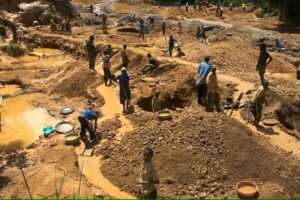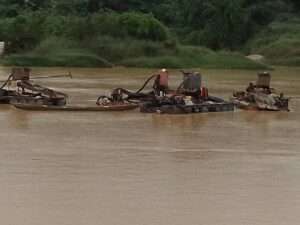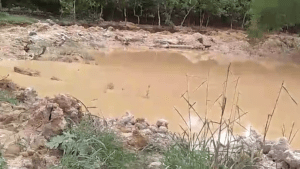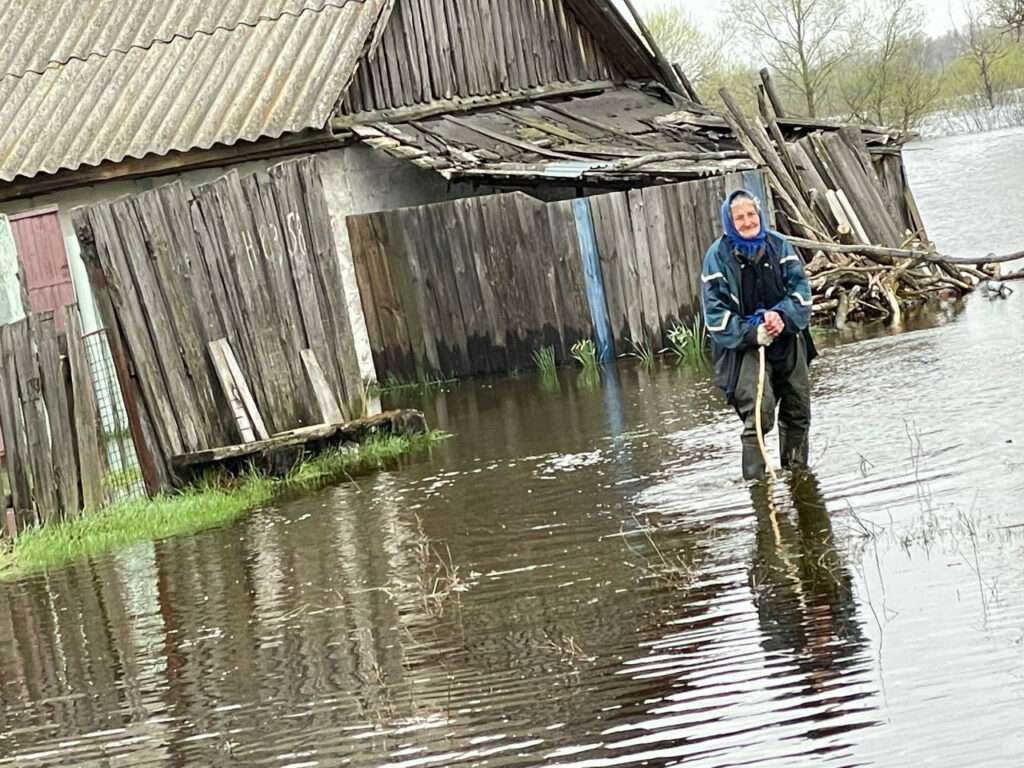
Unrepaired damage at a Russian-occupied dam has submerged communities on islands along a reservoir in southern Ukraine.
Lyudmila Kulachok, 54, right, stands at the flooded courtyard of her house in the island of Kakhovka reservoir on Dnipro river near Lysohirka.
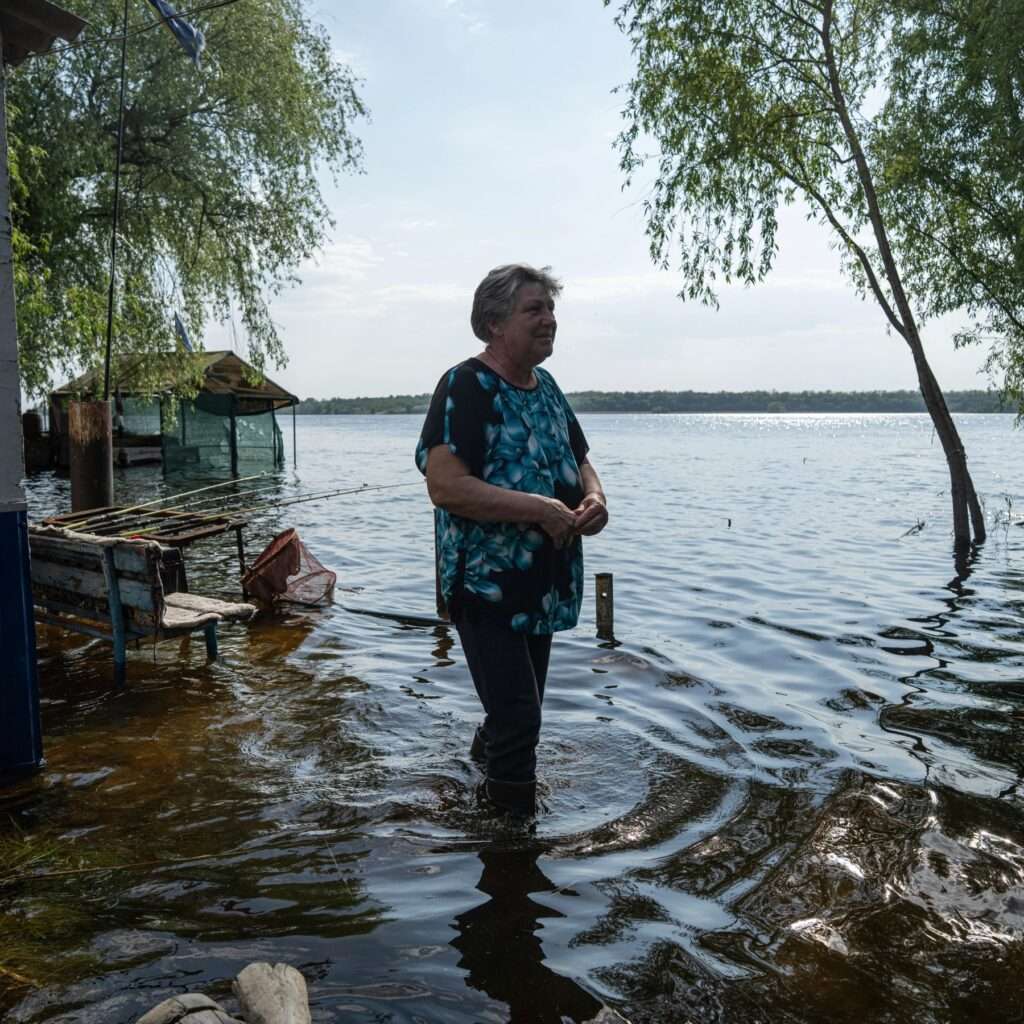
Lyudmila Kulachok, 54, stands in the flooded courtyard of her house on an island at Kakhovka Reservoir .
The rising waters came as a relief at first, for both the tiny community living on the islands in the southern Kakhovka Reservoir and for everyone who had feared the low levels risked a meltdown at the nearby Russian-occupied nuclear power plant.
Since mid-February, the water level in the reservoir has steadily increased, according to data from Theia, a French geospatial analytical organisation.
An Associated Press analysis of satellite imagery showed the water has now risen so high that it is washing over the top of the damaged Russian-occupied dam downstream.
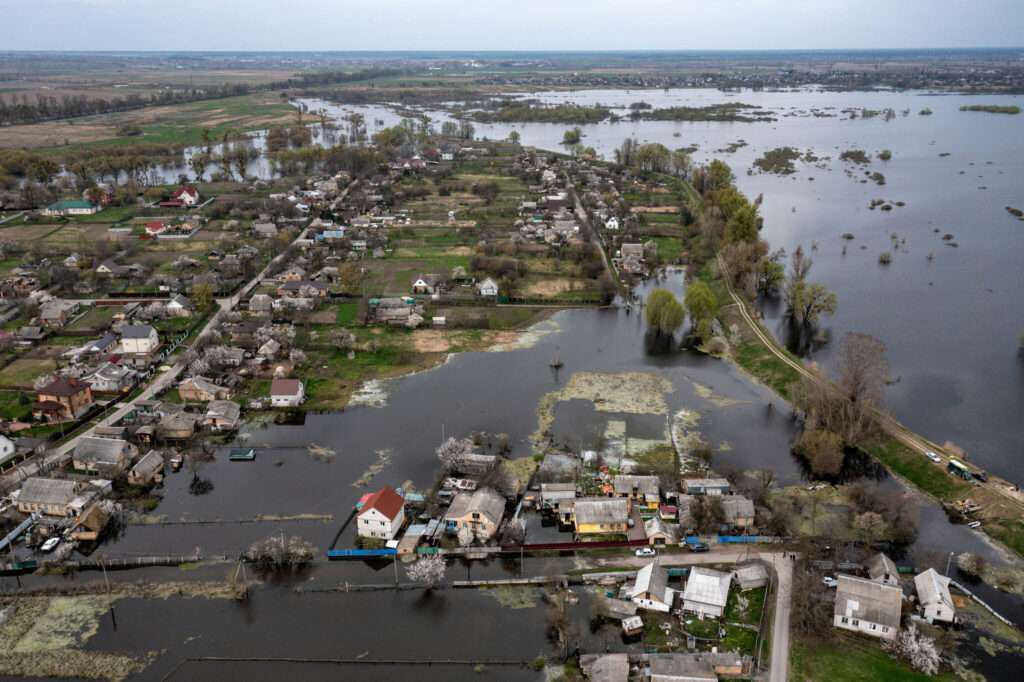
The waves first covered the natural shoreline, and then submerged the marsh grasses. Next, they came for Lyudmila Kulachok’s garden, then Ihor Medyunov’s guest room.
The wild boars fled for higher ground, replaced by waterfowl. Medyunov’s four dogs have an ever-smaller patch of grass to roam, and Kulachok serves meals on a picnic table sloshing through the murk in waders.
Ukraine controls five of the six dams along the Dnipro River, which runs from its northern border with Belarus down to the Black Sea and is crucial for the entire country’s drinking water and power supply.
The last dam, the one furthest downstream in the Kherson region, is controlled by Russian forces.

Flooded houses are seen in the island at reservoir on Dnipro river near Lysohirka, Ukraine,
Flooded houses on an island at the Kakhovka Reservoir on Dnipro Rier
All of Ukraine’s snowmelt and the runoff from rainy spring days winds up here, in the Kakhovka Reservoir, said David Helms, a retired meteorologist who has been monitoring the reservoir levels during the war. Russian forces detonated the sluice gates of the Nova Kakhovka Dam last November during the Ukrainian counteroffensive, although they ended up keeping control of that sliver of the Kherson region.
Now, either deliberately or through neglect, the gates remain closed.
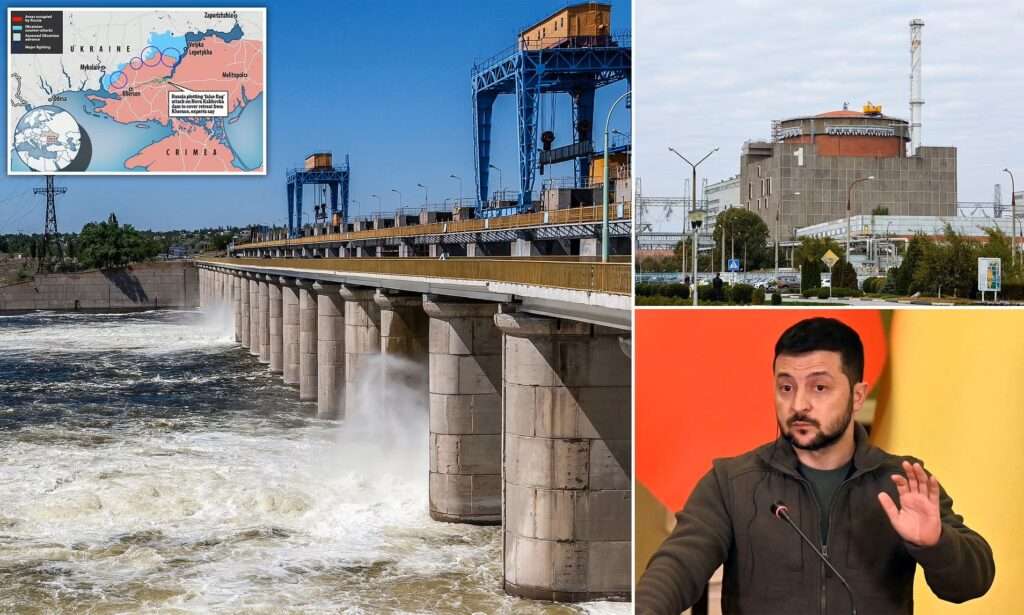
River dams work as systems. The idea is to manage the flow to provide constant water levels that secure both ships on the water and buildings on land, Helms said. This is done mechanically with a combination of locks, turbines and sluice gates — and constant communication among the operators of the individual dams.
Because the sluice gates are closed, the water is cresting over the top of the dam but nowhere near as fast as the waters are flowing down the Dnipro.
So there is little relief in sight for the handful of people left on the islands. The little community was primarily made up of second homes, but became more permanent with the start of the war, when people sought safety in its isolation.
Their contact with the outside world is now limited to a few food deliveries every week by Ukrainian police boats, because the reservoir is off-limits to any non-official watercraft to protect against sabotage of the basin that supplies about 40 percent of Ukraine’s drinking water.
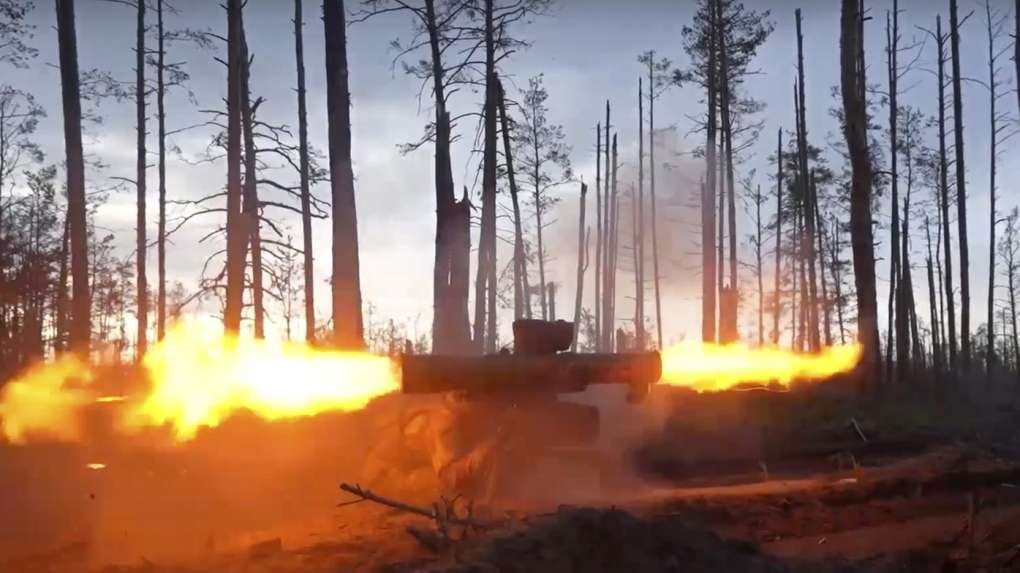
They listen to the sound of artillery and rocket fire. They joke darkly about needing a mask and snorkel to take cover in the basement.
“Here were onion, garlic, greens. There were peaches, apricots. Everything is dead,” said Kulachok, standing knee-deep in water in her vegetable garden. “At first, I cried. But now I understand that my tears don’t help.”
Lyudmila Kulachok, 54, left, with her family have dinner at the flooded courtyard of their house
Lyudmila Kulachok, 54, left, with her family in the flooded courtyard of their house [Evgeniy Maloletka/AP Photo]
Fish is about the only thing that is plentiful on the island right now. She caught two swimming in the kitchen as she prepared the traditional borscht soup with chicken parts delivered by police earlier in the week.
“This is a war. Many people lose things in their lives. And then I thank God that all my loved ones are alive,” she said. She said her son is a soldier in the eastern town of Bakhmut, the epicentre of the battle against Russia. “He hasn’t seen this and I don’t know how to show it to him.
He will say, ‘God, how many years did we work just to end up with this?’”
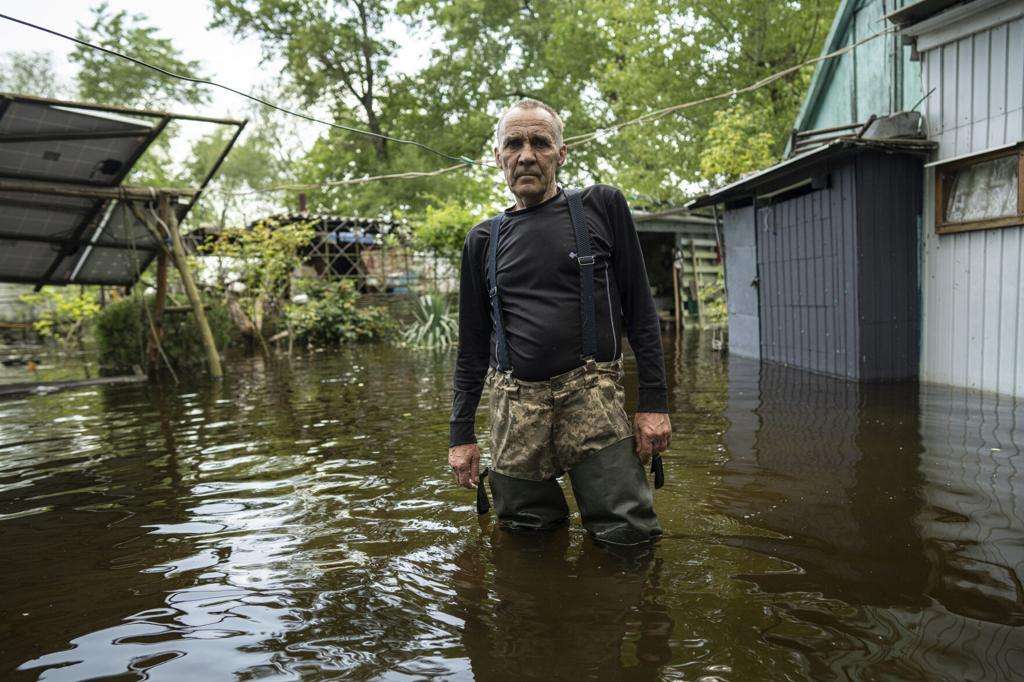
By early February, the water levels were so low that many across Ukraine and beyond feared a meltdown at the Russian-occupied Zaporizhzhia nuclear power plant, whose cooling systems are supplied with water from the reservoir. The spring rains came early and hard, and then combined with the snowmelt.
“The Russians simply aren’t actively managing and balancing the water flow,” Helms said. He compared it to a bucket with a small hole that is now being filled by a firehose. Eventually, the water splashes out over the top “almost like the emergency circuit breaker has been hit”.
Satellite images from May 15 showed water washing over the damaged sluice gates, exactly as Helms described.
All of this is invisible and yet obvious to Ihor Medyunov, whose yard is now a small patch of swampy grass. Even the neighbours who came to the island to escape the war have decided the prospect of missiles is preferable to endless floods.


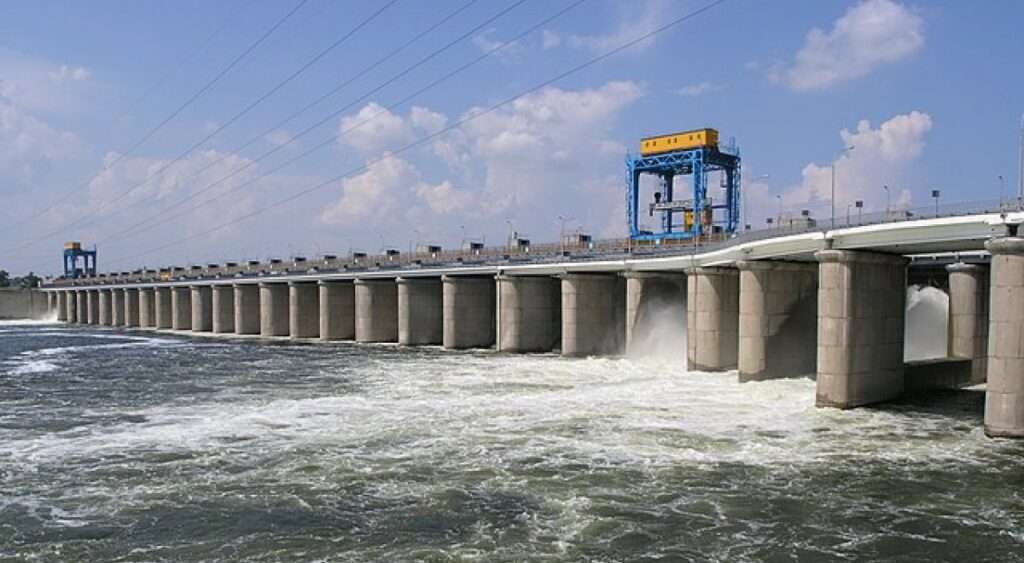
Helms said the water levels are likely to drop slowly during the summer dry season. But that seems a distant future to Medyunov, whose work as a hunting guide ended with the war.
“Now, there is nowhere to go,” he said. “We will wait for a better time to rebuild, repair. It’s really painful.”
By Richard Koomson| mediacentralonline.info |Ghana
kindly send us your stories on our WhatsApp line 0500004727



